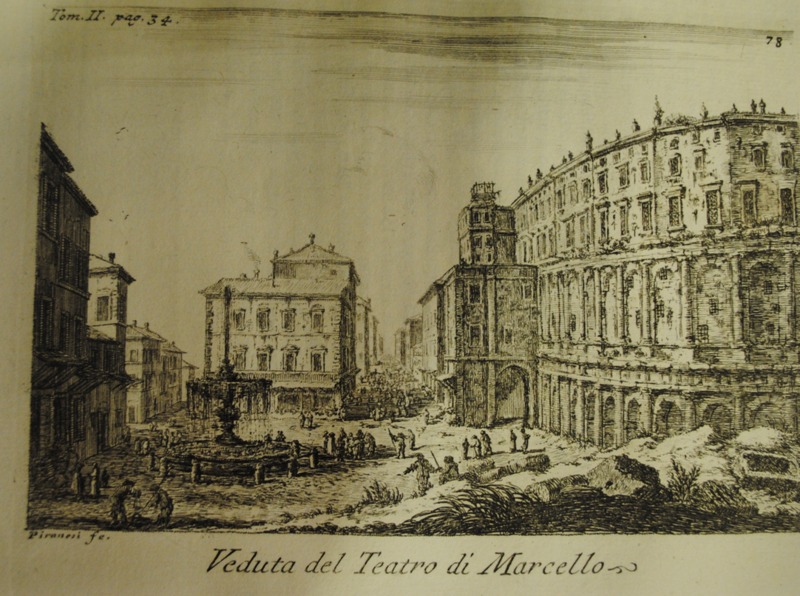Augustus & Public Works

Drawing of Theatre of Marcellus as published in 1689 showing Augustus' lasting architectural legacy.4
Augustus’ decision to continue construction on the theatre was highly political.1 After Julius Caesar was murdered, there followed a period of civil war from which Augustus emerged as the most powerful man in Rome. He cemented his power in part by continuing his forebear's construction projects. The theatre was an especially important building to continue because “public entertainment at private expense” had always been a concept intertwined with Roman politics.2 Augustus made sure to publicize his work by published a self-assessment of his good deeds, a book named “Res Gestae”, and is known for saying he turned Rome from a city of brick to a city of marble.3
______________________________________________________________________________
1 Nancy H. Ramage and Andrew Ramage, Roman Art: Sixth Edition, (Upper Saddle River, NJ: Pearson Education, Inc., 2015), 111.
2 Ramage, Roman Art, 116.
3 Ramage, Roman Art, 112.
4 Filippo de’Rossi and Bartolomeo Marliani, Ritratto di Roma antica: formato nuovamente, con le auttorità, di Bartolomeo Marliani, del P. Alessandro Donati, di Famiano Nardini, e d'altri celebri antiquarii, accennati nell' epistola al lettore, (Roma: Nella libreria di M. Rossi, 1689).